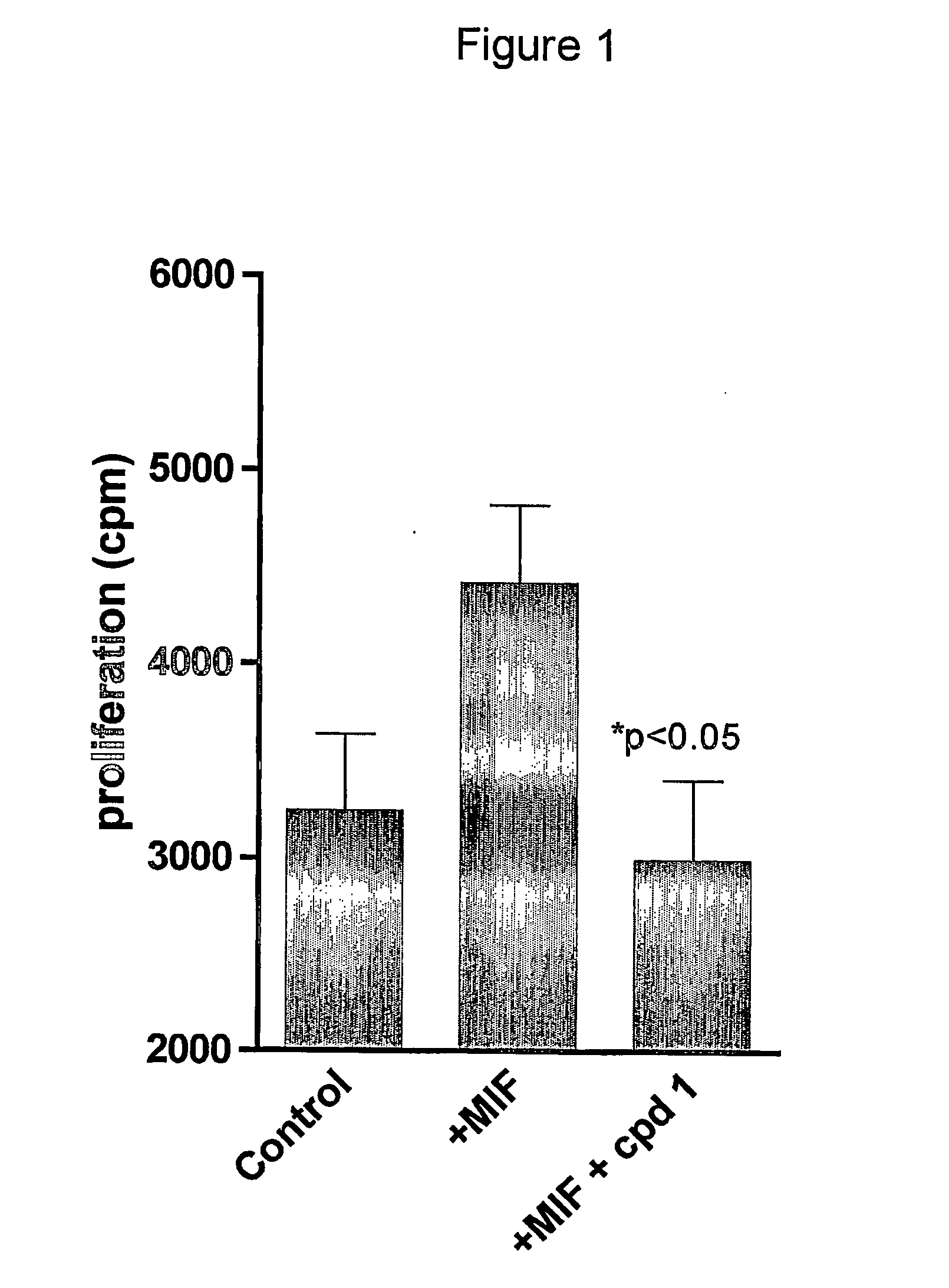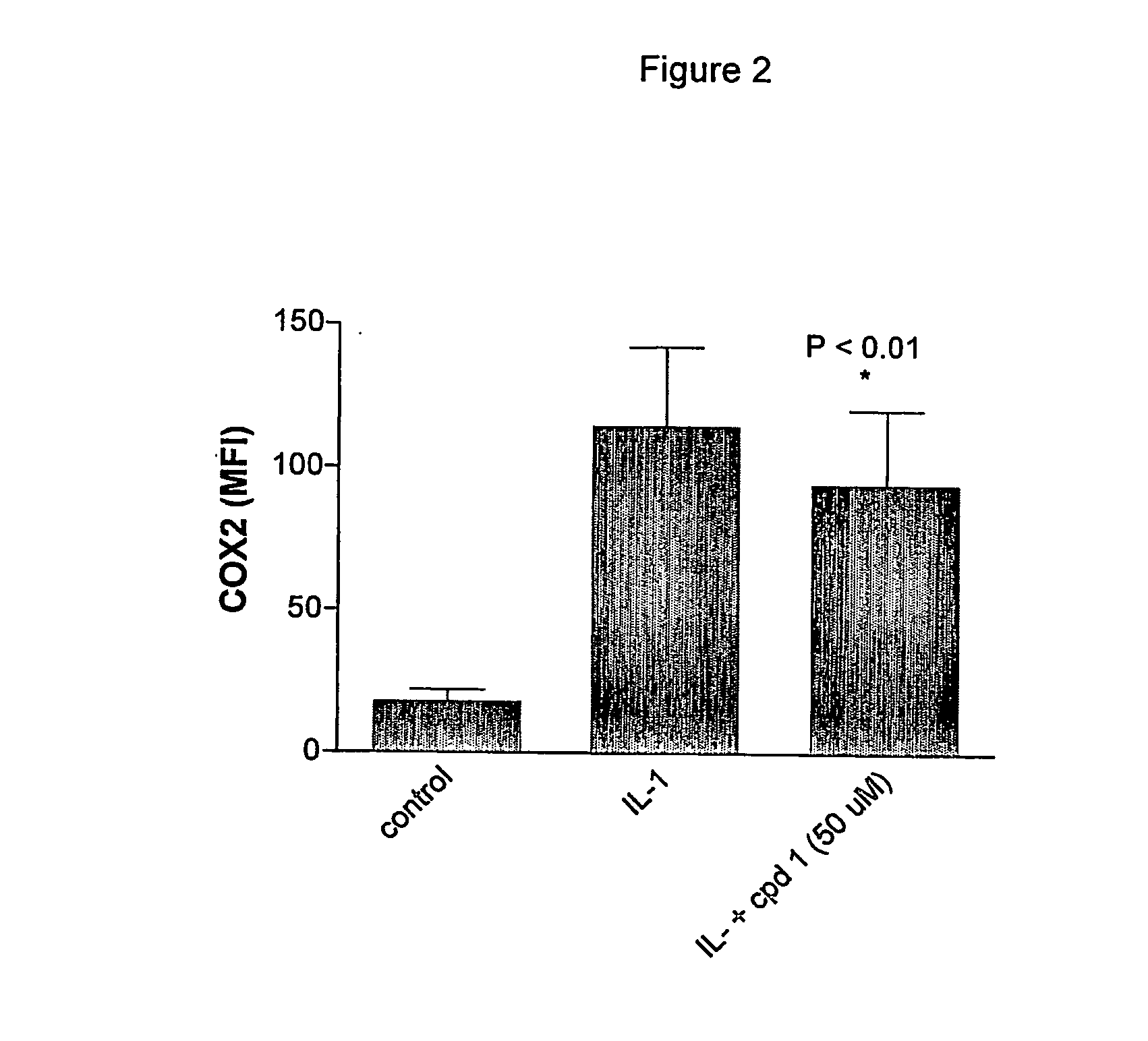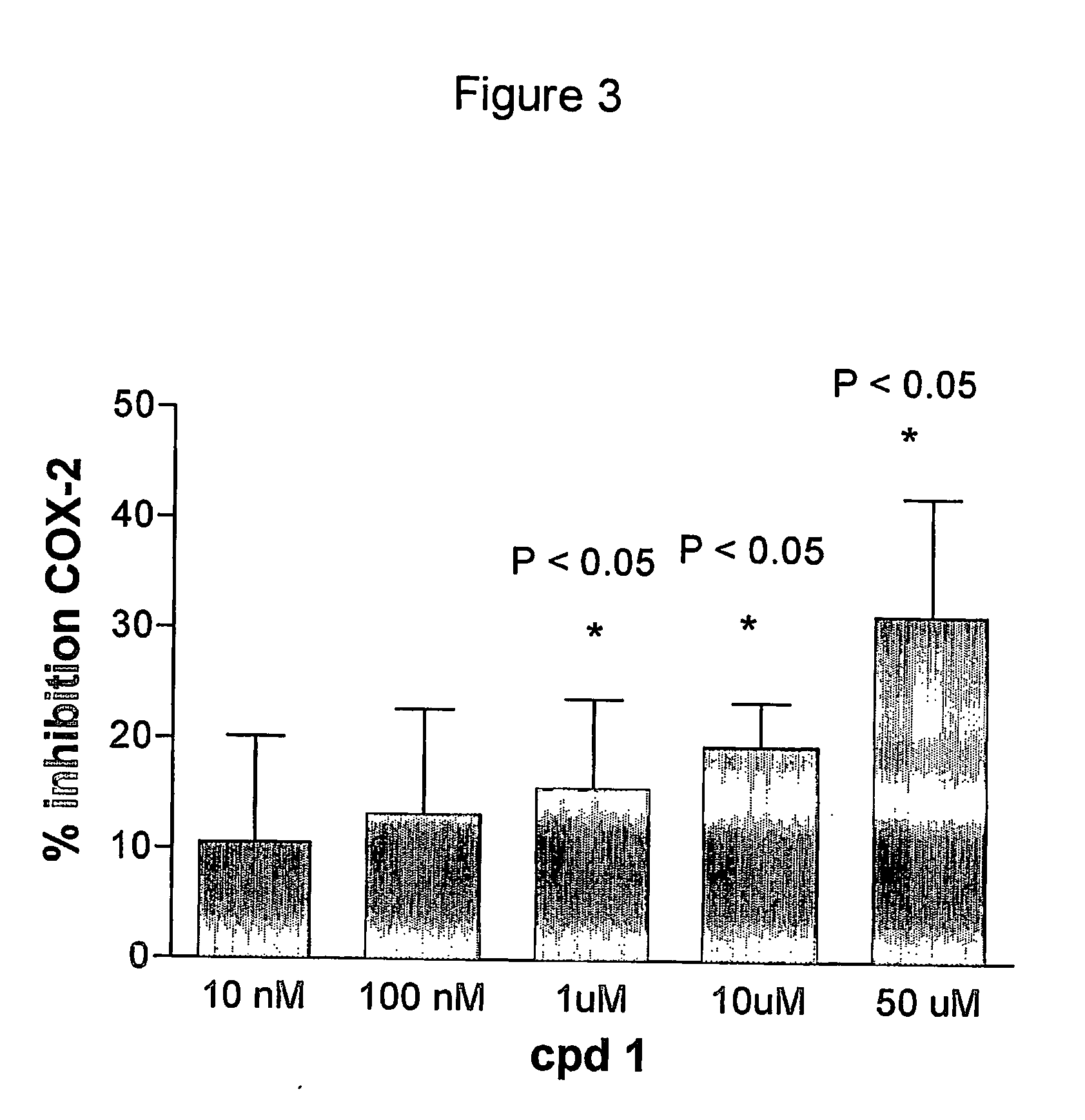Novel methods for the treatment of inflammatory diseases
a technology for inflammatory diseases and new methods, applied in the field of new methods for the treatment of inflammatory diseases, can solve the problems of limited universal use of glucocorticoids, biochemical molecules are expensive to prepare on a commercial basis, and do not readily lend themselves to formulations, so as to enhance the effect of glucocorticoids
- Summary
- Abstract
- Description
- Claims
- Application Information
AI Technical Summary
Benefits of technology
Problems solved by technology
Method used
Image
Examples
example 1
Preparation of 2-(2-hydroxyethoxy)-2-(4-hydroxy-3-methylphenyl)-1,3-dioxolane (Compound 1)
[0355]
[0356] A mixture of 3-methyl-p-hydroxybenzaldehyde (0.5 g, 3.6 mmol), ethylene glycol (0.34 g, 5.5 mmol) and p-toluenesulfonic acid (0.07 g, 0.36 mmol) in toluene was heated under reflux. After 24 h, the reaction mixture was cooled to room temperature, TLC showed no starting material. The toluene was removed in vacuo and saturated solution of sodium hydrogen carbonate (20 ml) was added to the residue, which was then extracted with ethyl acetate (3×20 ml). The organic layer was washed with water (20 ml), dried over anhydrous sodium sulfate and the solvent was removed in vacuo. The residue was then recrystallised from an ethyl acetate and hexane mixture to give the product as a brown solid in 24% yield.
[0357]1H NMR (CDCl3): 2.21 (s, 3H), 3.62 (t, 2H, J=4.5 Hz), 3.70 (t, 2H, J=4.2 Hz), 3.81 (t, 2H, J=4.7 Hz), 4.42 (t, 2H, J=4.7 Hz), 6.74 (d, 1H, J=8.4 Hz), 7.21 (d, 1H, J=8.4 Hz) and 7.78 (...
example 2
Preparation of 2-(2-hydroxyethoxy)-2-(4hydroxyphenyl)-1,3-dioxolane (Compound 2)
[0359]
[0360] To a solution of p-hydroxybenzaldehyde (1 g, 8.18 mmol) in anhydrous toluene (100 mL) was added ethylene glycol (0.68 mL, 12.28 mmol), pyridinium toluene sulphonate (0.2 g, 0.88 mmol) and p-toluene sulphonic acid monohydrate (0.16 g, 0.88 mmol). The solution was refluxed overnight before concentrating the solvent to furnish an amber gum. Saturated sodium bicarbonate (50 mL) was then added to the reaction mixture, and extracted with ethyl acetate (3×50 mL). The organic extracts were dried over magnesium sulphate, filtered, and concentrated to furnish a dark brown gum. The gum was chromatographed on silica (ether / methanol, 9.5:0.5) to furnish the title compound as a dark brown solid (173 mg, 9%).
[0361]1H NMR (CDCl3): 7.88 (d, 2H, 2× ArCH, J 8.7 Hz), 7.49 (bs, 1H, phenolic hydroxyl), 6.82 (d, 2H, 2× ArCH, J 8.7 Hz), 4.46, 3.84 (2× appt, 2× 2H, 2× ethoxy CH2, Jvic 4.5 Hz), 3.74 (m, 2H, dioxola...
example 3
Preparation of 2-(2-hydroxyethoxy)-2-(3-bromo-4-hydroxy-5-methylphenyl)-1,3-dioxolane (compound 3)
[0363]
[0364] A mixture of compound 1 (109 mg; 0.4 mmol), N-bromosuccinamide (80 mg; 0.4 mmol) and AIBN (7.3 mg; 0.045 mmol) in dry carbon tetrachloride was refluxed for 5 hrs, TLC did not show any of the starting material. The reaction mixture was cooled to room temperature and then concentrated to dryness. The residue was dissolved in ethyl acetate (2×10 ml). The clear solution was washed with distilled water (5×10 ml), dried over anhydrous Na2SO4 and evaporated to dryness. This gave a 47% yield of compound 3.
[0365]1H NMR (CDCl3): 2.32 (s, 3H), 3.65 (t, 2H, J=4.4 Hz), 3.74 (t, 2H, J=4.3 Hz), 3.83 (t, 2H, J=4.7 Hz), 4.46 (t, 2H, J=4.8 Hz), 7.80 (s, 1H) and 8.02 (s, 1H).
PUM
| Property | Measurement | Unit |
|---|---|---|
| Time | aaaaa | aaaaa |
| Biological properties | aaaaa | aaaaa |
| Therapeutic | aaaaa | aaaaa |
Abstract
Description
Claims
Application Information
 Login to View More
Login to View More - R&D
- Intellectual Property
- Life Sciences
- Materials
- Tech Scout
- Unparalleled Data Quality
- Higher Quality Content
- 60% Fewer Hallucinations
Browse by: Latest US Patents, China's latest patents, Technical Efficacy Thesaurus, Application Domain, Technology Topic, Popular Technical Reports.
© 2025 PatSnap. All rights reserved.Legal|Privacy policy|Modern Slavery Act Transparency Statement|Sitemap|About US| Contact US: help@patsnap.com



